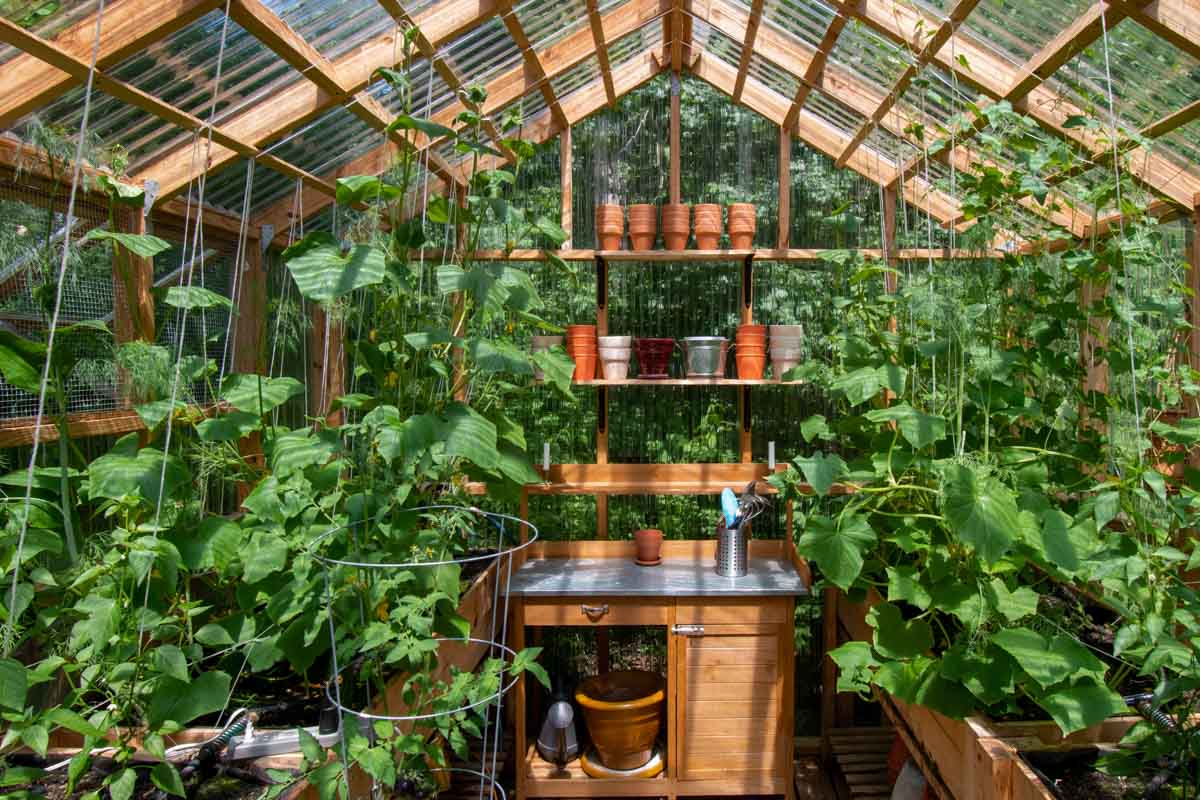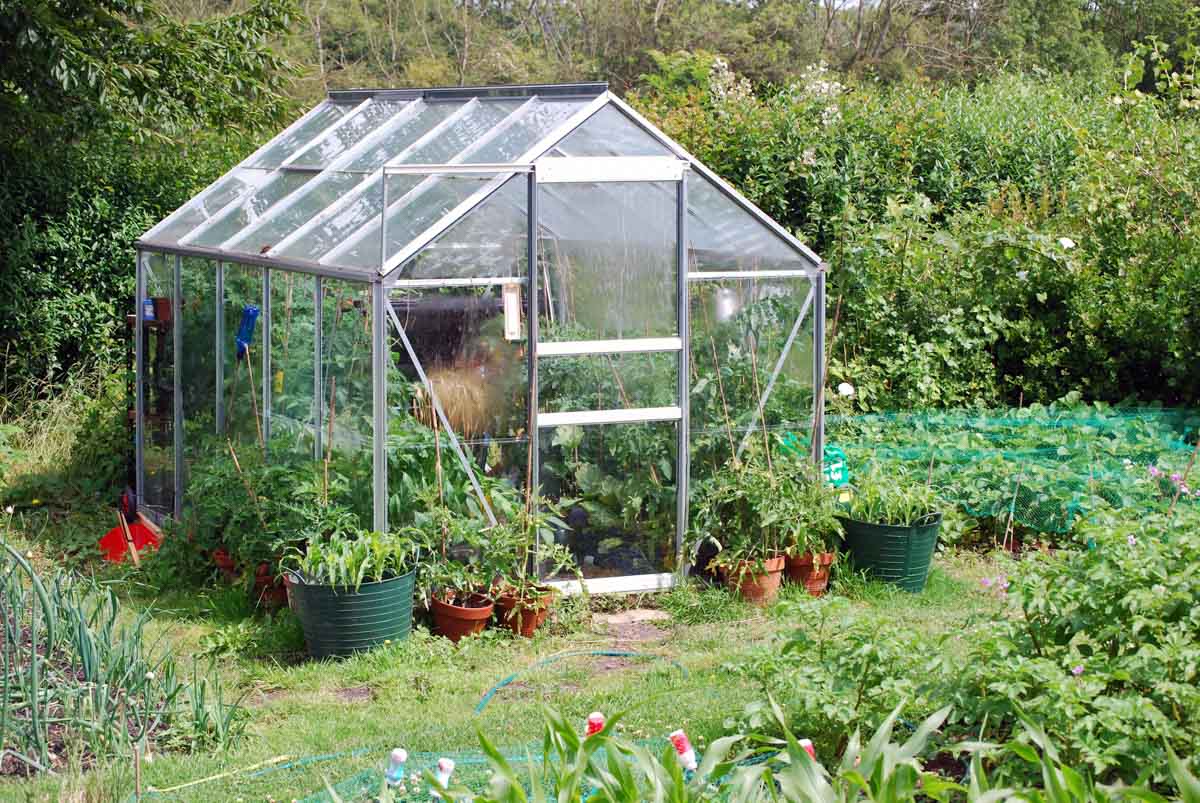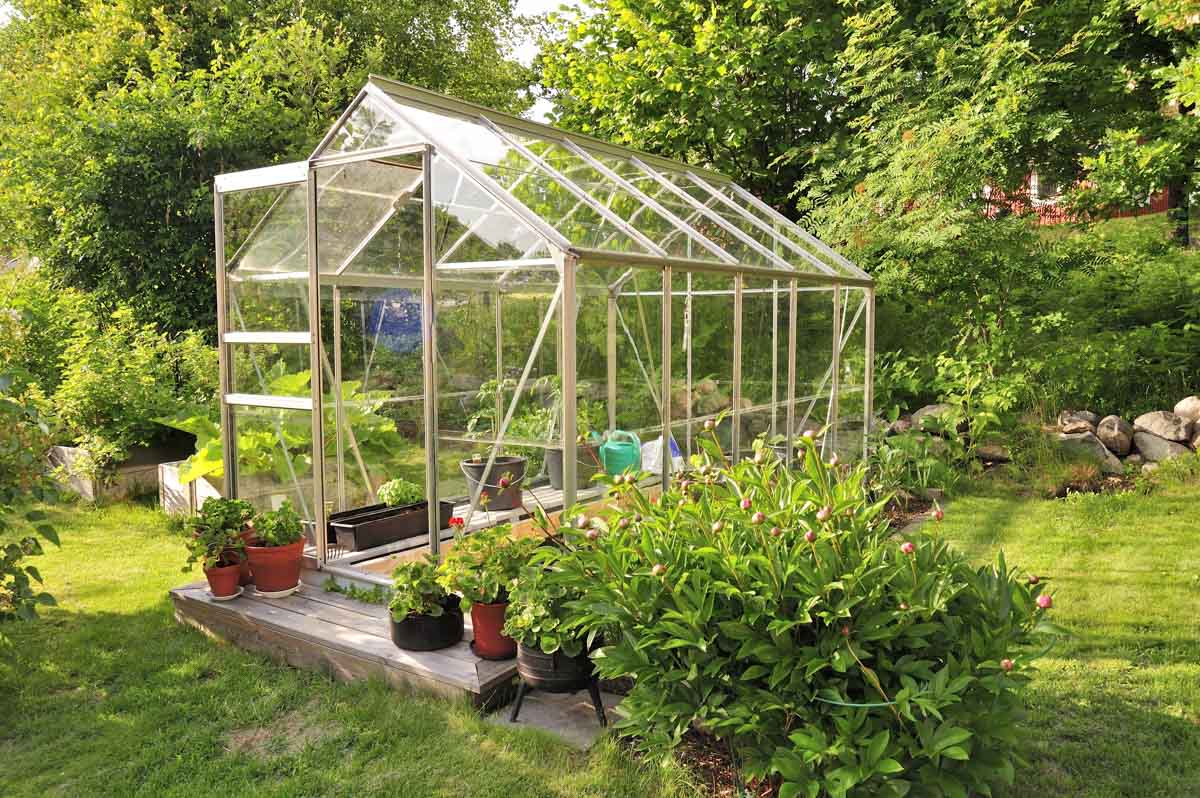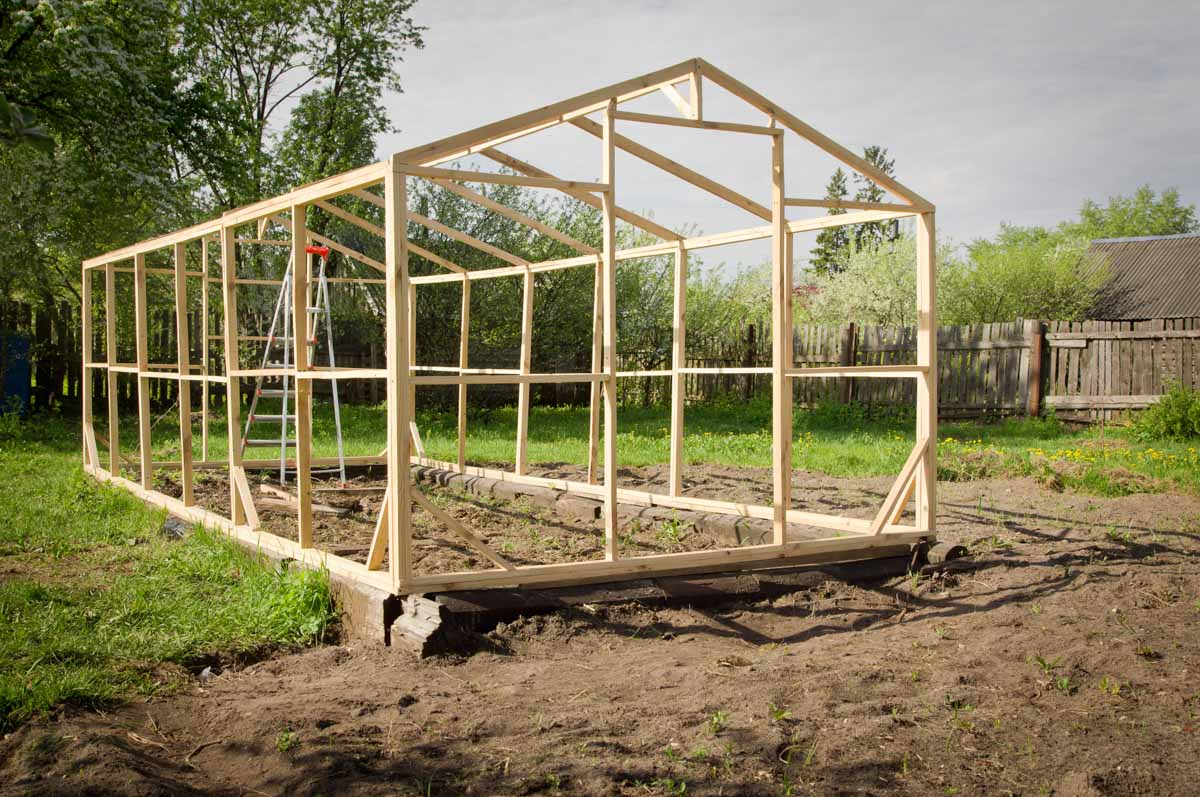Want to know the best material for a greenhouse frame? Read this practical guide.
When you’re choosing the frame material for your greenhouse, there are a few factors to consider.
The first is cost: which material is the most affordable? The second is weight: some materials are much heavier than others. And finally, you’ll want to think about durability and maintenance: how easy is it to clean and keep in good condition?
In this comprehensive guide, we’ll take a look at four popular materials for greenhouse frames: wood, aluminium, galvanized steel, and PVC plastic piping, and weigh up the pros and cons of each.
Common Materials for Greenhouse Frames
Wooden Frames

Wooden frames are the most traditional option for greenhouse construction. They’re affordable and easy to maintain, but they’re also quite heavy.
If you’re looking for a sturdy frame that will last for many years, wood is a good choice. It’s important to make sure that the wood is pressure treated and sealed with a waterproof sealant or paint to protect it from the elements.
Benefits of Using Wooden Frames
Wooden frames are attractive and versatile, and they offer a number of benefits for greenhouse owners.
Once installed, wood is relatively easy to maintain: all you need is a coat of waterproof sealant or paint every few years to keep them in good condition.
Wooden frames are also very sturdy and can withstand wind and snow loads. Finally, they provide good insulation, which helps keep your plants warm in the winter.
Drawbacks of Using Wooden Greenhouse Frames
There are a few drawbacks to using wood for a greenhouse frame. First, it’s quite heavy, which can make it difficult to move around for installation.
Also, and more importantly, if not properly treated, wooden greenhouse frames will rot or warp over time.
Aluminium Frames

Aluminium frames are a good option if you’re looking for a lightweight frame that’s still durable.
They’re less expensive than both steel and wood frames – so the most pocket-friendly option. Aluminium is also corrosion-resistant and doesn’t rust, making it a good choice for coastal climates.
Benefits of Using Aluminium for a Greenhouse Frame
Aluminium frames have a number of benefits that make them a popular choice for greenhouse owners.
First, they’re very lightweight, which makes them easy to move around. Second, they’re durable – with the right treatment you can prevent corrosion. They’re also thermally conductive, meaning that they transfer heat quickly and evenly throughout the frame, which helps keep your plants warm in the winter.
Drawbacks of Using Aluminium in a Greenhouse Frame
There are a few drawbacks to using aluminium for a greenhouse frame. First, it’s one of the more expensive options compared to other materials. Second, it can be difficult to find frames in different sizes and shapes. Third, it’s not as aesthetically pleasing as some of the other materials available.
Galvanized Steel Frames

Steel frames are the most durable option, but they’re also the heaviest and most expensive.
They’re a good choice if you live in a cold climate, as steel is not affected by extremely cold temperatures.
However, steel frames can be susceptible to rusting if not properly treated.
Benefits of Using Galvanized Steel for a Greenhouse Frame
Galvanized steel frames are a good option for people who want a durable, low-maintenance frame.
They’re really strong – so you need fewer beams to support your structure. With the right design, this can translate into a lot more light in your greenhouse. Additionally, galvanized steel is thermally conductive, meaning that it transfers heat quickly and evenly throughout the frame, which helps keep your plants warm in the winter.
Drawbacks for using Galvanized Steel for a Greenhouse Frame
There are a few drawbacks to using galvanized steel for a greenhouse frame.
The main one is the fact that most steel greenhouse frames are made to be used with polyethylene film rather than glass or polycarbonate. While this might be an appropriate option for commercial growers, it can look unattractive in your garden.
PVC Plastic Piping
PVC piping is a good option for greenhouse frames if you’re looking for a lightweight, affordable material that’s easy to maintain.
It’s not as durable as the other greenhouse frame materials we’ve discussed in this guide, but it’s a good choice for hobbyists or people who only plan to use their greenhouse occasionally.
PVC is also non-toxic and will not release any harmful chemicals into the soil.
Benefits of Using PVC Plastic Piping for a Greenhouse Frame
PVC plastic piping is a newer option for greenhouse construction, and it has a number of benefits that make it a popular choice for many gardeners.
It’s affordable, lightweight, and easy to construct, and it doesn’t rust or corrode.
Drawbacks of Using PVC Plastic Piping for a Greenhouse Frame
There are a few drawbacks to using PVC plastic piping for a greenhouse frame.
Firstly, it doesn’t have as much structural strength as other materials and so may not prove as durable over time. Secondly, it can be difficult to find frames in different sizes and shapes. Thirdly, it’s not as aesthetically pleasing as some of the other materials available.
Best Greenhouse Frame: Conclusion
So, which is the best material for a greenhouse frame?
The answer really depends on your individual needs and preferences. However, aluminium frames are a good choice as they’re the longest lasting and they’re fairly economical too.




